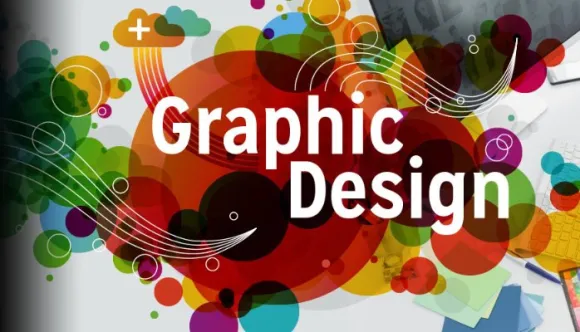Graphic design is more important than ever in today’s visually-driven world. From e-commerce websites and branding to social media marketing and digital advertising, the role of graphic designers is central to creating compelling and impactful visual content. Whether you’re designing a logo for a new brand, creating an engaging user interface for a website, or producing eye-catching social media posts, graphic design is essential in communicating ideas and connecting with audiences.
If you’re considering a career in graphic design, this guide will walk you through the various roles, the skills you need, how to get started, and the salary expectations in this fast-evolving industry.
What Do Graphic Designers Do?
Graphic designers create visual content to communicate messages. They combine art, technology, and creativity to design visual concepts that captivate audiences, drive engagement, and solve problems. Graphic designers work on a wide range of projects, from logos and branding materials to digital ads, websites, and product packaging. Here’s a look at the different roles within graphic design:
Graphic Designer
Graphic designers are responsible for creating a wide range of visual materials for both digital and print media. This includes designing logos, brochures, posters, advertisements, social media graphics, and more.
Skills Needed: Creativity, attention to detail, proficiency in design software (such as Adobe Creative Suite), and an understanding of typography and colour theory.
Visual Designer
Visual designers focus on the aesthetics and overall look and feel of digital products, such as websites, mobile apps, and other digital interfaces. Their role overlaps with graphic design but places more emphasis on the visual experience.
Skills Needed: A strong understanding of design principles, proficiency in design software, and knowledge of web design best practices.
Branding Designer
Branding designers specialize in creating the visual identity of a company or product. They design logos, colour schemes, typography, and other visual elements that make up a brand’s identity. Branding designers help businesses establish a consistent, recognizable look across all platforms.
Skills Needed: Creative vision, an understanding of brand strategy, and experience in logo and identity design.
UX/UI Designer
UX/UI designers focus on improving the user experience and user interface design of digital products. UX (User Experience) design focuses on the overall experience a user has with a product, while UI (User Interface) design focuses on the design of the product’s interface—how it looks and interacts with users.
Skills Needed: A mix of graphic design and user experience knowledge, proficiency in design tools like Sketch, Figma, or Adobe XD, and a strong understanding of user behaviour.
Why Graphic Design is Trending
The demand for graphic designers has skyrocketed for several reasons. As businesses continue to move online and social media platforms remain central to marketing strategies, the need for skilled designers is higher than ever. Here are some key factors driving the demand:
The Rise of E-Commerce
As more businesses shift to e-commerce, there’s a growing need for visually appealing websites, product pages, and digital ads. Graphic designers are essential for creating the visual elements that help brands stand out in a crowded marketplace.
Branding is Key
In a competitive market, strong branding is essential. Companies want their products and services to stand out, and graphic designers play a key role in creating a memorable visual identity that resonates with consumers.
Social Media Marketing
Social media has become a powerful tool for businesses to connect with their audiences. From Instagram posts to Facebook ads, graphic designers create visuals that catch the eye and engage users. The rise of social media influencers and content creators also fuels the demand for skilled graphic designers who can help build a personal brand or create visually striking content.
Digital and Print Media Convergence
As marketing strategies evolve, the line between digital and print design continues to blur. Graphic designers must be versatile, creating content for both digital platforms (like websites and social media) and traditional media (like print ads, packaging, and signage).
The Need for User-Friendly Design
With the growth of mobile apps, websites, and other digital experiences, the demand for designers who can create user-friendly, aesthetically pleasing interfaces has risen. UX/UI design is becoming a more prominent part of the graphic design field, requiring designers to balance creativity with functionality.
How to Become a Graphic Designer
Education & Training
While a formal degree in graphic design or a related field can help, many graphic designers are self-taught or gain expertise through online courses and certifications. A strong foundation in design principles, colour theory, typography, and digital tools is essential. There are plenty of online platforms offering design courses, including Coursera, Skillshare, and Udemy.
Build a Portfolio
Your portfolio is one of the most important tools for getting hired as a graphic designer. Start by creating sample projects or working on real-world projects, even if it’s for friends or non-profits. Include a variety of work in your portfolio, such as logo designs, digital ads, social media posts, and website designs. Make sure to showcase your versatility and skills across different design mediums.
Gain Experience
Hands-on experience is crucial in this field. Internships, freelancing, or working on small projects can help you gain real-world experience and build your professional network. As you gain experience, you’ll refine your style and learn how to meet the specific needs of clients and brands.
Learn Design Software
Graphic designers need to be proficient in design software like Adobe Illustrator, Photoshop, InDesign, and other tools like Figma or Sketch. Learn how to use these programs effectively, as they are the backbone of graphic design work.
Stay Current with Trends
Graphic design is an ever-evolving field, and staying up-to-date with the latest design trends, tools, and technologies is essential. Follow design blogs, attend conferences, and join design communities to stay inspired and keep learning.
Salary Expectations for Graphic Designers
Salaries in graphic design can vary based on experience, location, and the type of design work you specialize in. Here’s a breakdown:
- Graphic Designer: The average salary for a graphic designer is between $45,000 and $65,000 annually, though it can vary depending on experience and location.
- Visual Designer: Visual designers can earn between $60,000 and $85,000 per year, with senior designers or those working in larger firms making even more.
- Branding Designer: Branding designers typically earn between $55,000 and $85,000 annually, with top branding designers earning more.
- UX/UI Designer: UX/UI designers are among the highest-paid in the graphic design field, with salaries ranging from $70,000 to $100,000 or more, depending on experience and expertise.
Freelancers or those running their design businesses have the potential to earn more, especially as they build a strong client base.
Graphic design is an essential skill in today’s digital world, with a growing demand for talented professionals in various roles. Whether you’re interested in logo design, branding, UX/UI, or social media content creation, there are plenty of opportunities for creative individuals in this field.
By gaining the right education, building a strong portfolio, and staying current with design trends and software, you can carve out a successful career as a graphic designer. With the rise of e-commerce, social media marketing, and the increasing focus on branding, graphic design is an exciting, ever-evolving industry to be a part of.






